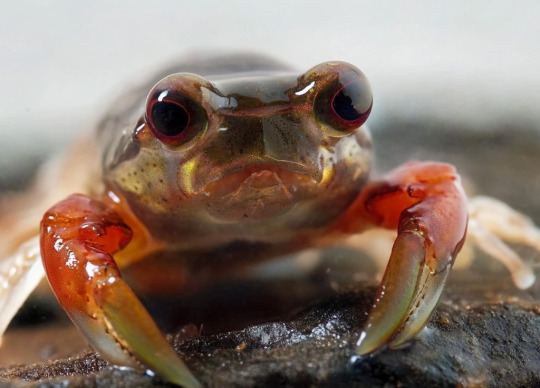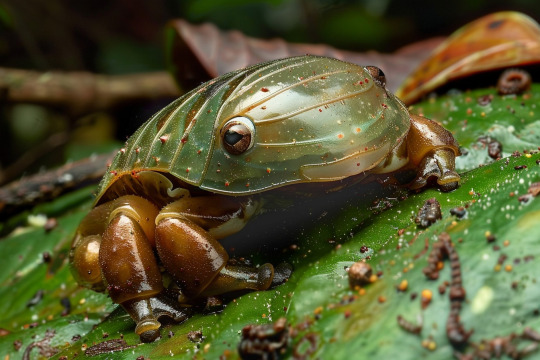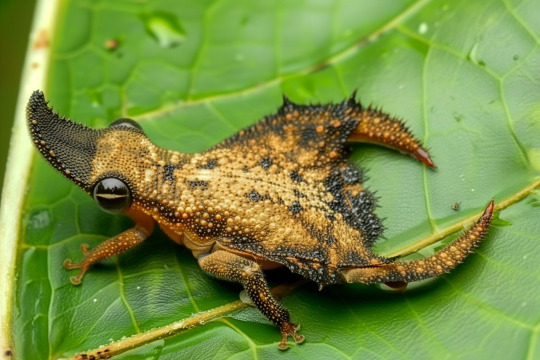#extrasolar chimerae
Explore tagged Tumblr posts
Text



Goby prawns, Midjourney V6.
#ai lobsterfish#shrimp x fish hybrids#extrasolar chimerae#panspermic marine fauna#ukrainian pride prawns
3 notes
·
View notes
Text
The last book I read was:
Rendezvous With Rama by Arthur C. Clarke
Approximately one hundred years from now the satellites tasked with guarding the Earth from dangerous asteroids detect an odd extrasolar object. We name the object Rama. On closer inspection Rama is revealed to be a perfect cylinder—a made object from another star!
I’m currently reading:
Chimera by John Barth
This read was supposed to be “serious” literature, so you can imagine my surprise when I found myself reading a cartoonishly ribald tale about Scheherazade as told by her sister, Dunyazad. Wild!
3 notes
·
View notes
Photo


In 1992, astronomers discovered the first exoplanet, or planet outside our solar system. But it didn’t come in any form they’d really anticipated.
Neutron stars are the second densest type of object in the universe outside black holes. They form when a giant star dies and explodes outward as a result of the collapse of its core. Put simply, the star becomes too massive to go on and expels all its energy into the surrounding space. The core is a sort of ground zero of this detonation. When that core collapses, depending on the size of the star, it becomes either a neutron star or a black hole.
Some neutron stars are called pulsars, for the regular “pulses” they give off in radio frequencies. Think of many of them like a drummer — fast regular beats. Some pulsars, called millisecond pulsars, “drum” so fast that it would put Napalm Death’s drummer Danny Herrera to shame.
Those pulses are so regular that if they don’t come at the right interval, astronomers know something is off.
A breakthrough in 1992 provided rock-solid evidence of planets. Astronomers Aleksander Wolszczan and Dale Frail tuned into the pulsar PSR B1257+12, 2300 light-years away. It should have pulsed every 0.006219 seconds, but every now and then, its pulses were a little off. Yet those off-beats came at regular intervals as well. After intensive study, Wolszczan and Frail came up with an explanation for why that was: it had two planets around it. One was three and the other four times the mass of Earth, and they rotated around every 67 and 98 days, rounded up.
Pulsar planets are somewhere in between a zombie and a chimera. When a star explodes, usually the planets in that system are destroyed or flung out by a shockwave. But after the violence settles down, the gas and dust can recondense. This, in effect, means that the three planets in B1257 may be made out of parts of the planets that came before them. Given the extreme radiation in these systems, almost no one has ever thought that the B1257 system could host life.
From the 1980s on, many groups had been on the hunt for the first planet around a Sun-like star. Some candidates came and went. Others required dozens or hundreds of observations to officially confirm.
But an observation in January 1995 proved to be the real deal. Didier Queloz, a grad student at the University of Geneva, was working with his advisor, Michel Mayor, on the search for extrasolar planets via radial velocity, in other words, wobbles.
Reportedly, his find was a chance coincidence. Out of a catalog of radial velocity signatures, he chose an F-type star called 51 Pegasi, roughly 50 light-years distant. He was trying to calibrate his planet finding code, opting for the star as one of a few promising candidates. It fell into place that night, a strong signal roughly every four days.
Measurements placed its minimum mass near Jupiter — meaning the object was without a doubt a planet. While astronomers considered it possible to have such periods, it wasn’t necessarily expected to find one in such a short period. “At this time, I was the only one in the world who knew I had found a planet,” Queloz told the BBC in 2016. “I was really scared, I can tell you.”
There was some reason to be scared: finding a planet was then — and in some ways is still — really hard, and there were plenty of mistakes, ghosts, inexplicable data points, and other hiccups that never seemed to form a planet or a brown dwarf. Yet according to Queloz’s data, the half-Jupiter-mass, quickly moving, ultra-hot planet was there.
Much of the rest of 1995 was spent by Queloz convincing Mayor that he had truly found a signal, not an instrument error or other quirk of observing. Their paper was finally published in October 1995. Astronomer Geoff Marcy (who was later forced out of the University of California, Berkeley, after allegations of sexual harassment) followed up the observations and found that the Geneva team was on to something — he and collaborator Paul Butler were able to find the same signature at an entirely different observatory.
Further reading: http://astronomy.com/news/2019/10/how-the-first-exoplanets-were-discovered?fbclid=IwAR2SQmLyMoiBmPIn8oqF5BE1qXyOSQ0KV-MM7MbkWJXsGEEC8UHRztIWKhc
Article by John Wenz.
21 notes
·
View notes
Text




Ceratosirenians and ceratocetaceans. More fictional chimerical panspermic marine wildlife field guide pseudo-illustration via Midjourney Niji 6.
#ai trash#sirenian dugong manatee hybrids#ceratopsian cetacean orca whale chimerae#panspermic extrasolar fauna#tapirverse nonsense
5 notes
·
View notes
Text


MOAR crustaceabrates
TOP: Panspermic mudskipper crab, chimerical denizen of the extrasolar mangrove swamps. Midjourney Niji 6 -> 6.1 + preferences
BOTTOM: Poison arrow crab, probably a relative of the volcanic crab frogs. This one appears to be missing a leg : ( Midjourney 6.1
#ai trash#squishy panspermic fish frog hybrids#extrasolar crab x vertebrate chimerae#tapirverse fauna
3 notes
·
View notes
Text


Rainforest isofrogs. Isophrods...? Midjourney 6.
#ai armadillidiidae arthrophibians#isopod x frog hybrids#crustacean x amphibian chimerae#woodlice pill bugs potato bugs sow bugs roly polies#panspermic and extrasolar fauna
14 notes
·
View notes
Text

Flightless baby hippo beetle foraging atop a giant floating mat of megafloral spatterdock. Midjourney 6
#ai amphibious alien#hexapodal hippopotamus#hippo x beetle hybrid#chimerical extrasolar fauna#panspermic extraterrestrial chimera
7 notes
·
View notes
Text




Diverse panspermic pseudosauropods retextured via Midjourney's direct image editor. TOP: Atlas TOP MIDDLE: Beerachiosaur BOTTOM MIDDLE: Lashing Out BOTTOM: Avocetiosaur
#teh evil ai#extrasolar sauropod hybrids#spiny whip lobster bee wasp curlew avocet#dinosapient action#tapirverse chimerae
2 notes
·
View notes
Text


Rainforest bug frogs: conehead katyfrog and Hercules beetlefrog. Midjourney 6
#ai insect x frog hybrids#katydid x frog#dynastes x frog#panspermic chimerae#tropical extrasolar jungle
8 notes
·
View notes
Text







Spheniscrabs, panspermic relatives of the pinnicrabs and kin.
Midjourney 6.1
3 notes
·
View notes
Text


Mature pinnicrabs. I mean, they're technically still adolescents, but they ACT mature for their age.
Midjourney 6
#ai aliens#crab x sea lion hybrids#crustacean x pinniped hybrids#arthropod x vertebrate hybrids#panspermic extrasolar chimerae
5 notes
·
View notes
Text


Ancestral Ouroboroids. That offset toroidal body module (the asymmetrical ring-shaped "tail") may house an organic cyclotron/synchrotron developed to produce counterbarium particles facilitating biogravitic locomotion. But like gravity itself, that's JUST A THEORY
Midjourney 6.1 + preferences
#ai trash#python gecko civet leopard squirrel hybrids#arboreal panspermic extrasolar chimerae#toroidal doughnut donut ring organisms#agravitic counterbary tapirverse fauna
1 note
·
View note
Text



Desert spiderfoxes (fennarachnids?). I envisoned these guys as fox- rather than spider-sized, though the granularity of the sandy soil here kinda disrupts the illusion. I guess you'll just have to USE YOUR IMAGINATION rather than relying on the AI to do all the heavy lifting for you. Ironic, isn't it?
Midjourney 6
#airony#wheel spider#fennec#fox x spider hybrid#mammal x arachnid hybrid#panspermic chimera#extrasolar desert fauna
3 notes
·
View notes
Text


Rhinoceros hornbeetles, or "beetlebills." Midjourney 6
#ai alien avifauna#hornbill x toucan x dynastes hybrids#extrasolar avian x insect chimerae#panspermic bird beetles x
5 notes
·
View notes
Text

Cothurnocystis gecko, often mistaken for an earwig or owlfly gecko by exozoological dilettantes. Midjourney 6
#happy ai easter#echinoderm x reptile hybrid#stylophora x lizard hybrid#asymmetrical panspermic chimera#lopsided extrasolar fauna
6 notes
·
View notes
Text





SPIDERCATS: tarantuleopards and jaguarachnids. Midjourney 6
#ai alien big cats#leopard#jaguar#spider#tarantula#spider x feline hybrids#arachnid x mammal hybrids#arthropod x vertebrate hybrids#panspermic extrasolar chimerae
2 notes
·
View notes